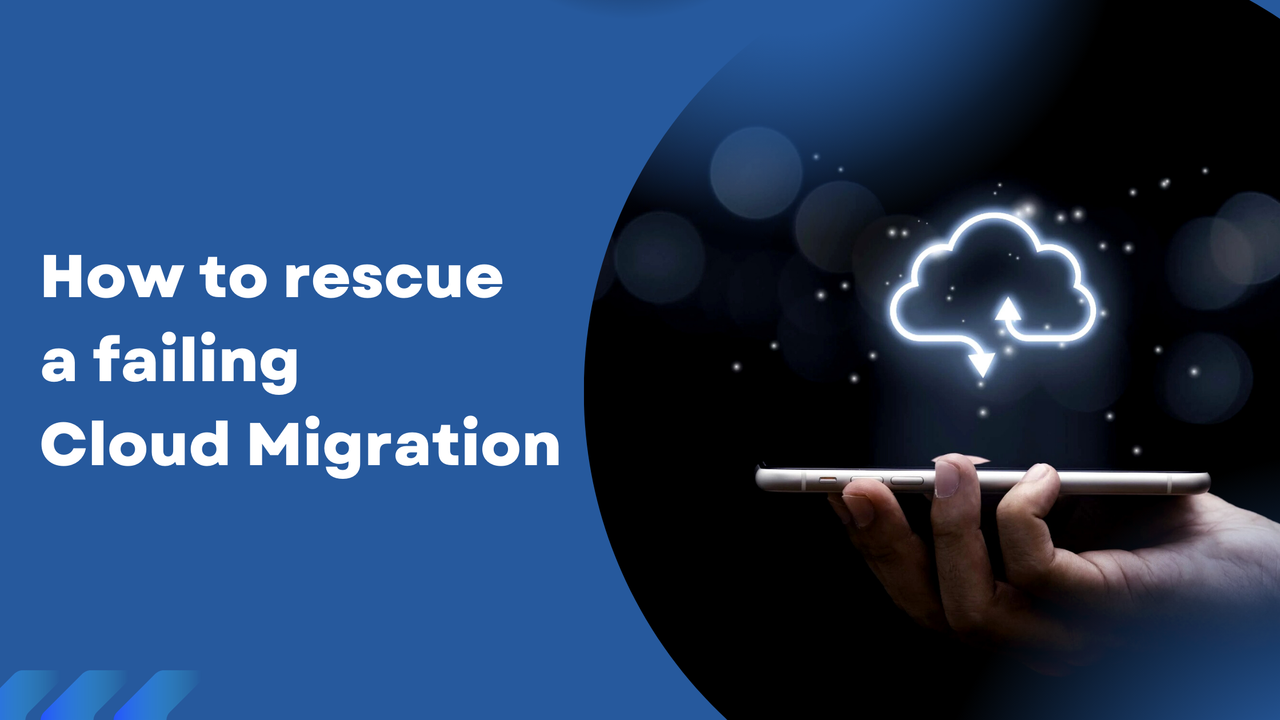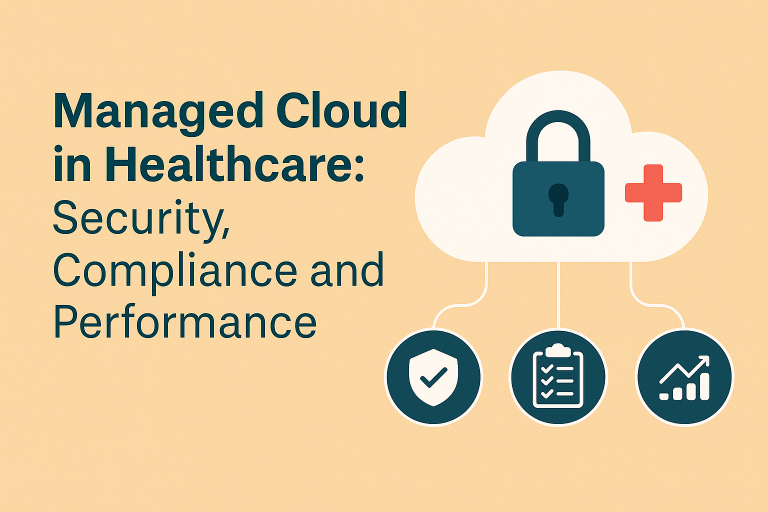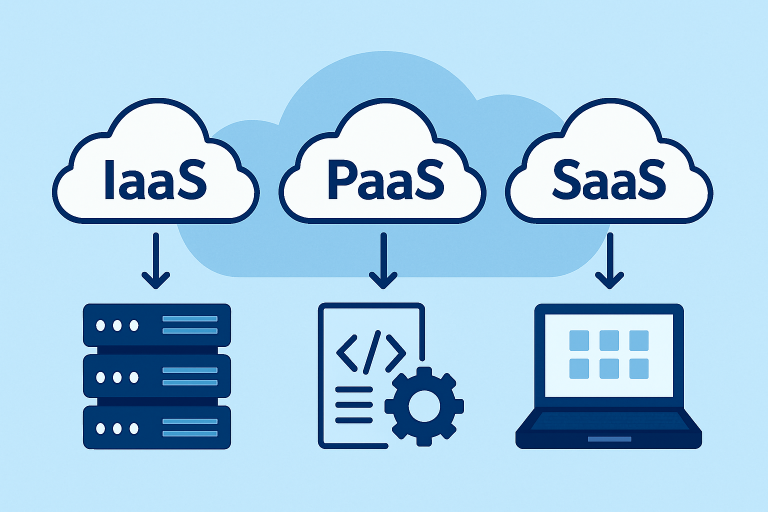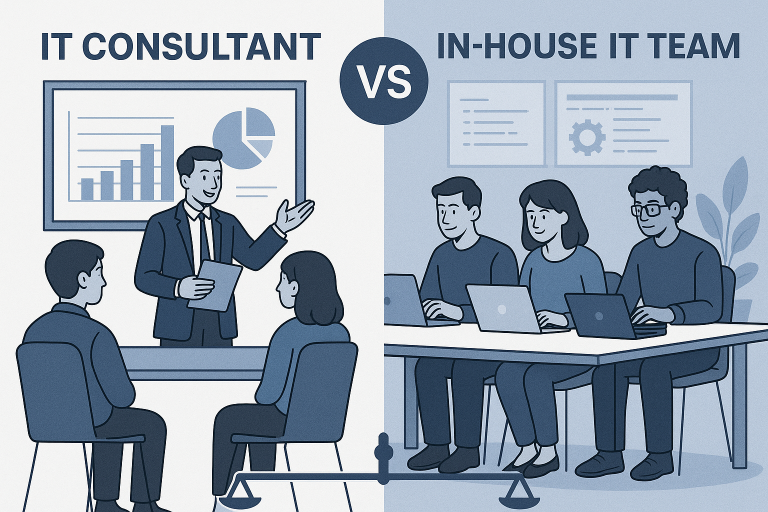
Many companies attempting to rescue failing cloud migration find themselves facing unexpected challenges. Statistics say that number is quite high who have experienced a failing cloud migration. Many of the migration attempts don’t deliver the expected outcomes. The migration process may take a longer period of time. Even the expenses of cloud costs are too high, and quite challenging to accommodate excess costs for organizations. Some faulty migrations can cause serious performance issues due to technical problems.
So, when you find that your cloud migration is not going right at any stage of the process, you need to pause and take action to get it back on track. To rescue your failing cloud migration, first, you need to understand what is going wrong and where you need to make fixes.
This blog is about six common issues that can lead your cloud migration in the wrong direction and how to address them.
1. Ensure expectations are aligned
Cloud migration involves several steps, and sometimes, when you think your migration is ‘failing’, it is just on its way to success. You may have this kind of confusion in case of a lift and shift migration. A lift and shift approach works best when you move items from a data centre to the cloud. But, you need a better strategy for moving services and applications so they can be used instantly and can take advantage of the new environment. During the transition period, the running costs may be higher than before.
To avoid such a situation, first, you need to make every relevant party understand what needs to be done to enjoy cloud benefits and what can be the transitional consequences. Here, transparency is the key. It is also essential to make everyone aware that the physical move is just one part of the migration process. After migration, there is a journey towards cloud-native technologies, which also need some time to run appropriately.
2. Consider the opinion of SMEs
When you need to modernize services and applications for the cloud, it will be complex and time-taking. In such cases, the cloud engineers have to work blind, which becomes more complicated and time-consuming. Even there is a chance of failing migration deadlines. Even engineers may fail to assign the correct resources to deployments, which will lead to massive disruption or poor performance and operational challenges. This can impact your business badly and affect the customer experience.
To avoid such issues, you must consider a service provider who has in-hand experience handling respective services or applications. An experienced cloud IT consulting service provider can explain how an application or service is built, how it works, etc. They also can clarify if any dependencies or technical debts are there. This process may involve extra cost and time before or during the migration. But this investment can help you in faster and smoother transition and better performance in the new environment.
3. Be realistic about cloud migration and your expectations
It might take longer than usual for cloud optimization, but it is not possible to wait for infinity. Moreover, if it does not deliver a good enough outcome to justify the long waiting, it will be a wasted spend indeed. Sometimes, it is wise to consider a completely different approach to achieve your desired cloud-native solution instead of endless waiting.
For instance, you can consider opting for Amazon Aurora Serverless. This brand new service allows a traditional database to run in the cloud along with automatic start-up, shut down and scaling facility as per the application’s needs.
4. A spike in running costs
When making significant decisions like cloud migration, you need to prepare a budget considering the long-term perspective rather instead of focusing on immediate spend. Otherwise, a false alarm of budget failure may ring by the expense spike accommodating dual running costs. If business leaders are not forewarned, it can be a huge concern. Moving your database and other resources from a datacentre environment to the cloud always takes time when dual running is a mandate. All parties need to agree with this double running costs as it can minimize the duration of this migration bubble.
You can also consult with your cloud partner about programs and services that can help to mitigate the impact. AWS’ Migration Acceleration Program (MAP) can be an option as it covers a portion of the dual running costs for organizations.
5. Have an explicit knowledge of the functionality of your critical technologies in the cloud
Besides cost and time management, performance issues are also vital in failing a cloud migration. In most cases, the problems are related to a poor understanding of the technology that actually supports applications. You can also experience database malfunctions. This is a common problem caused by the incompatibility with the new environment, and it takes lots of hard work to resolve the issue after migration.
To avoid any database related issues, you need to assess your databases before migration and ensure that they will work as-is in the cloud. The best way is to consult an expert to help you analyze your key technologies and databases to avoid those blocks which might fail your migration attempt.
6. Invest in professional help
Cloud migration is not so easy, especially for larger organizations with multiple applications, technologies, and other concerns to deal with. To have a smooth migration process, it is essential to have a dedicated project manager. They will coordinate with the stakeholders and make them fully engaged and updated. Project managers will also coordinate the inputs from subject matter experts and technology specialists and help to maintain transparency. Working with cloud engineers, your project managers can help to avoid cloud migration failure. They also monitor those factors that can impact time, cost and performance during migration.
Key takeaways
If you are on the way to a cloud migration program and it is not going as planned, you must pause and try to find out the factors affecting your output. Considering the ways mentioned above, you can make better upfront planning to save your failing migration. If you’re already in the cloud and disappointed with the outcomes, don’t worry. You need to investigate the root causes. Then you can look for cloud modernization services to turn the situation around.







